 Lots of little Microsoft stories:
Lots of little Microsoft stories:
Free anti-virus from Microsoft.
Microsoft kills off Money completely.
Smartphone total cost of ownership.
 Lots of little Microsoft stories:
Lots of little Microsoft stories:
Free anti-virus from Microsoft.
Microsoft kills off Money completely.
Smartphone total cost of ownership.
(Note: Yes, it’s Tuesday, but I thought I’d give you a break from Apple news, so here’s this week’s column.)
 Apparently WWDC has rattled some feathers in the Windows community. Apple is on the move, and its clear even in this recessionary environment consumers are still buying Macs.
Apparently WWDC has rattled some feathers in the Windows community. Apple is on the move, and its clear even in this recessionary environment consumers are still buying Macs.
The MacBook realignment was to be expected, and to bring system value back. I’m no fan of the way Apple releases new systems for this reason. Towards the end of the product cycle, the systems lose value because the internals do not change while the rest of the industry is continuously updating.
But that’s not what has the friends of Redmond upset.
Microsoft was mentioned during the keynote, especially surrounding the release of Windows 7. This is what whipped the Microsofties up into a near frenzy.
It appears the beef is this: Apple software chief Bertrand Serlet makes a comment saying Windows 7 is essentially the second coming of Vista. This is leading into his discussion of how Snow Leopard has made development easier, while Windows development remains unnecessarily complex.
After all, this was a development conference, correct?
Let’s summarize. Apple is apparently hypocritical because Snow Leopard is the second coming of Leopard. Somehow, the Microsofties would have you believe that Apple sprung this on us without us knowing. But there’s one problem with that — we’ve known this for over a year now.
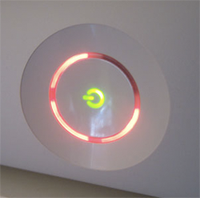 If you own an Xbox 360, consider hanging on to any box that might fit your console, just in case you get the Red Ring of Death.
If you own an Xbox 360, consider hanging on to any box that might fit your console, just in case you get the Red Ring of Death.
Joystiq reports that Microsoft will no longer ship out its custom-fitted “coffins” — somehow I don’t think this is the company’s lingo — in which to return broken Xbox 360s. Customers can still print out shipping labels on Microsoft’s dime, but they’ll have to find a suitable transport container themselves.
Microsoft’s confirmation is a change of course from what Joystiq learned in March, when a representative denied that customers weren’t getting the option of a coffin. All customers from every region around the world got to choose a prepaid label or a container with the shipping label appended, the representative said back then. The new policy went into effect on May 26.
A Microsoft representative told Joystiq that this move will “expedite the shipping process” because there’s no need to wait for Microsoft’s packaging, but you should be able to recognize the spin from a mile away. If killing the coffin is meant to help the customer, some sort of box should at least be optional for people who don’t have one sitting around. Its more likely that this is a cost-saving measure.
Joystiq recommends using any old box to ship a red ringed Xbox 360, but that raises more concerns. Are customers then expected buy packing peanuts or bubble wrap to keep the console secure? If not, what if some other component of the console breaks in transit? I’m going out on a limb here, but Microsoft could face either higher costs to repair additional parts or another PR nightmare when customers have to pay more to take care of a problem they didn’t cause.
The big takeaway? Either Microsoft is getting really stingy, or the company has been shipping a lot of boxes.
Best Buy customers who purchase PCs preloaded with Windows Vista between June 26 and Oct. 22 will receive free upgrades to Windows 7, according to a company memo obtained by Engadget.
Further, Best Buy will begin taking pre-orders on Jun. 26 for paid upgrades, according to the memo. Windows 7 Home Premium Upgrade copies will cost $49.95, and Windows 7 Professional Upgrade copies will sell for $99.99. No details have been released about what full installs will cost.
“This new operating system isn’t just a “Vista that works” program–it’s a new operating system with improved productivity, functionality and creativity that uses less computer resources,” the memo read.
Windows 7 will be generally available on October 22 if European anti trust regulators do not find something objectionable in the final release. However, as first reported by Technologizer, Microsoft has a contingency plan to ship in January should it face legal scrutiny.
Russia’s state anti-monopoly service today launched an investigation of Microsoft for phasing out its Windows XP operating system. The agency’s complaint centers on Microsoft’s decision to discontinue selling Windows XP after this month while demand for the operating system continues from retailers and the Russian government. It will consider charges against Microsoft on July 24.
Microsoft told Reuters that it would cooperate with the Russian government. Meanwhile, the company is appealing the European Commission’s (EC) preliminary findings concerning its middleware bundling practices for Windows. The charges were levied by browser maker Opera Software.
The EC initially fined Microsoft €497 million ($613 million) in 2004 for abusing its dominant market position, followed by an additional €280.5 million ($357 million) in July 2006 for charging “unreasonable prices” to software developers for access to information about Windows client and server protocols. The cumulative fines amount to nearly $2.3 billion.
Microsoft has made strides towards interoperability and openness since the EC penalized it. The company is now sharing information about the inner-workings of its products that it it once fought tooth and nail to hold as trade secrets. A specific problem was remedied.
I’m not an expert in the Russian customs code; it could have a legitimate bone to pick with Microsoft. It just seems silly to base an antitrust investigation on normal business behavior. Windows XP is not the first operating system that Microsoft has phased out, and it will continued to support compatibility for Windows XP applications in Windows 7.
Windows XP’s product life cycle and support policies are also public. Microsoft’s Moscow office would certainly have informed its customers about its transition to Windows Vista and beyond. I’m not certain what the Russian government is harping about–it has had ample time to plan for XP’s obsolescence.
I recently spoke with someone that was commissioned by the Canadian government to assess the viability of mainframes over the next decade. The Canadian government estimated that it would take nearly a decade for it to replace critical mainframe applications, and was performing due diligence to determine whether it needed to get started. It’s keeping its mainframe systems.
In the same vein, Russia should have known that there was risk when it purchased Windows XP in the first place, or negotiated terms to receive extended product support from Microsoft. When taken at face value, these antitrust charges are bogus.
 Special Palm Pre-free edition!
Special Palm Pre-free edition!
Tony La Russa’s suing Twitter.
Cheapest MacBook outperforms pricier version.
Sony Ericsson’s green cell phone.
Verizon’s 3G BlackBerry flip phone.
 Is an evening 5Words acceptable?
Is an evening 5Words acceptable?
David Pogue’s Pre review. Leaked.
And here’s Walt Mossberg’s take.
Engadget weighs in, too. Positively.
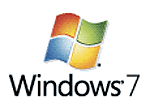 Back on May 11th, Microsoft confirmed what was already pretty obvious: Windows 7 would ship for the 2009 holiday season. Today, it got specific and said that the OS would show up on new PCs and in retail upgrade boxes on October 22nd. That’s a little later than some predictions–just yesterday I was telling someone that I thought it would arrive in time for the full back-to-school season–but it’s cheery news for a PC industry that’s presumably already worrying about the holiday sales period and looking for incentives it can give consumers to buy, buy, buy.
Back on May 11th, Microsoft confirmed what was already pretty obvious: Windows 7 would ship for the 2009 holiday season. Today, it got specific and said that the OS would show up on new PCs and in retail upgrade boxes on October 22nd. That’s a little later than some predictions–just yesterday I was telling someone that I thought it would arrive in time for the full back-to-school season–but it’s cheery news for a PC industry that’s presumably already worrying about the holiday sales period and looking for incentives it can give consumers to buy, buy, buy.
It’s also a positive development for consumers, since there’s plenty of evidence that a Windows 7 machine will be more pleasing than the same hardware loaded with Windows Vista (or for that matter, Windows XP).
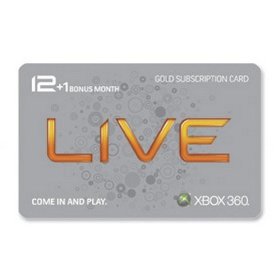 Microsoft wasn’t shy about its intentions during today’s E3 press event: It’s trying to branch out beyond the typical gamer set. Project Natal is one piece of the puzzle, and so is Xbox Live, for which the company revealed five significant additions and improvements.
Microsoft wasn’t shy about its intentions during today’s E3 press event: It’s trying to branch out beyond the typical gamer set. Project Natal is one piece of the puzzle, and so is Xbox Live, for which the company revealed five significant additions and improvements.
Let’s make this nice and easy with a list:
Social Networking: Come this fall, Facebook and Twitter will be accessible through Xbox Live. A demonstration showed the usual features, such as status updates and friend lists, presented in the New Xbox Experience’s distinct windows. One feature allows Facebook friends to find each others’ Xbox 360 Gamertags.
“Live Party”: Friends on Xbox Live can watch videos or listen to music together over the Internet. In a brief demonstration, avatars gathered in front of a television (within a television, of course), watching and reacting to the content.
Zune Marketplace: As we heard when Microsoft announced the Zune HD, Xbox Live’s video service will become Zune-branded, but it’ll get at least one substantive change in the form of 1080p streaming videos.
Last.fm: Xbox Live Gold members around the world will have access to millions of songs through Last.fm, simple as that.
Netflix Improvements: My biggest gripe with the Xbox’ 360s Netflix service was the inability to select movies or manage playlists directly on the console. Fortunately, that will change, so a PC is no longer required.
While the Zune and Netflix developments are just tweaks to existing services, the other three announcements go in a different direction. Microsoft wants the Xbox 360 to be a hangout. I can almost sense this ideal of families or friends crowded around the tube, getting a dose of interactive entertainment.
But will people get into it? Live Party didn’t get an enthusiastic response at the press event, and the social networking seems a little clunky for everyday use (especially without a keyboard). I’m reluctant to make a bold prediction either way, but I’m curious to see how this effort pans out.
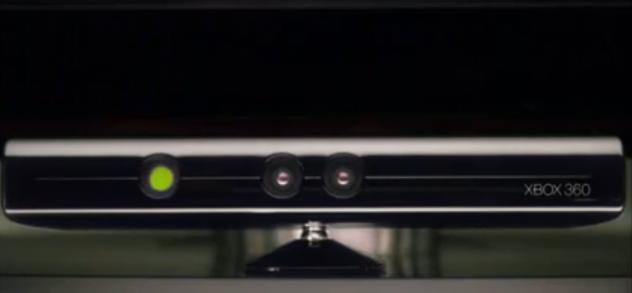 Kudo Tsunoda took a shot at the Wii when introducing Microsoft’s answer to motion control today.
Kudo Tsunoda took a shot at the Wii when introducing Microsoft’s answer to motion control today.
“This isn’t a game where you end up on the sofa just kind of using some preset waggle commands,” the project’s creative director said, talking about a physically intense tech demo.
Indeed, the so-called “Project Natal” was impressive, at least from where I was sitting at Microsoft’s E3 press event. As rumored, the technology is a 3D motion-sensing camera that needs no other peripherals to operate.
Video demonstrations included a young man performing karate kicks against an on-screen opponent, his image duplicated onscreen with dead-on accuracy. In the next clip, a girl held her hands like a steering wheel and drove a race car. When she hit a pit stop, one of her family members ran up to the screen and made the motions of replacing a tire.
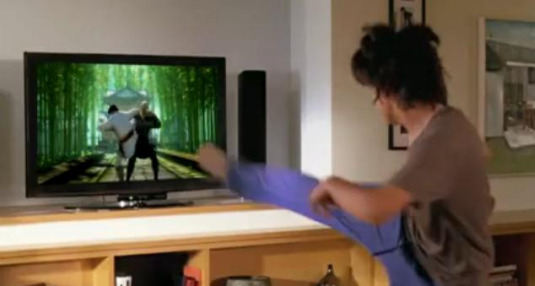
We also saw a couple of live demonstrations. In a full-bodied take on Breakout, a girl used her arms, legs and head to hit balls down a 3D corridor. Another demonstrator pretended to throw paint buckets at a screen and created live splatter art.
Finally, Fable 2 creator Peter Molyneux introduced “Milo,” a child that, in a video, interacted with a real woman. In the most impressive moment, she drew a picture, held it in front of the screen, and Milo took a virtual copy, recognizing the color and shape of the drawing. Milo will apparently be demonstrated to VIPs during E3.
Microsoft steered clear from any sort of release window for Project Natal. Everything shown was in prototype, and the initial video shown is “product vision” rather than real implementation. The closest we heard to a timetable is that development kits are going out now.
In my E3 wish list, I said I’d rather see Microsoft wait until the next console cycle to bust out motion control, but a comment by Don Mattrick, the Xbox division’s senior vice president, suggests that this technology will simply extend the life of the Xbox 360. It seems Microsoft is in no rush to move on to something else.
“We can leap into a new era of interactive entertainment without having to launch a new console,” he said.
You can see the concept video on YouTube.
